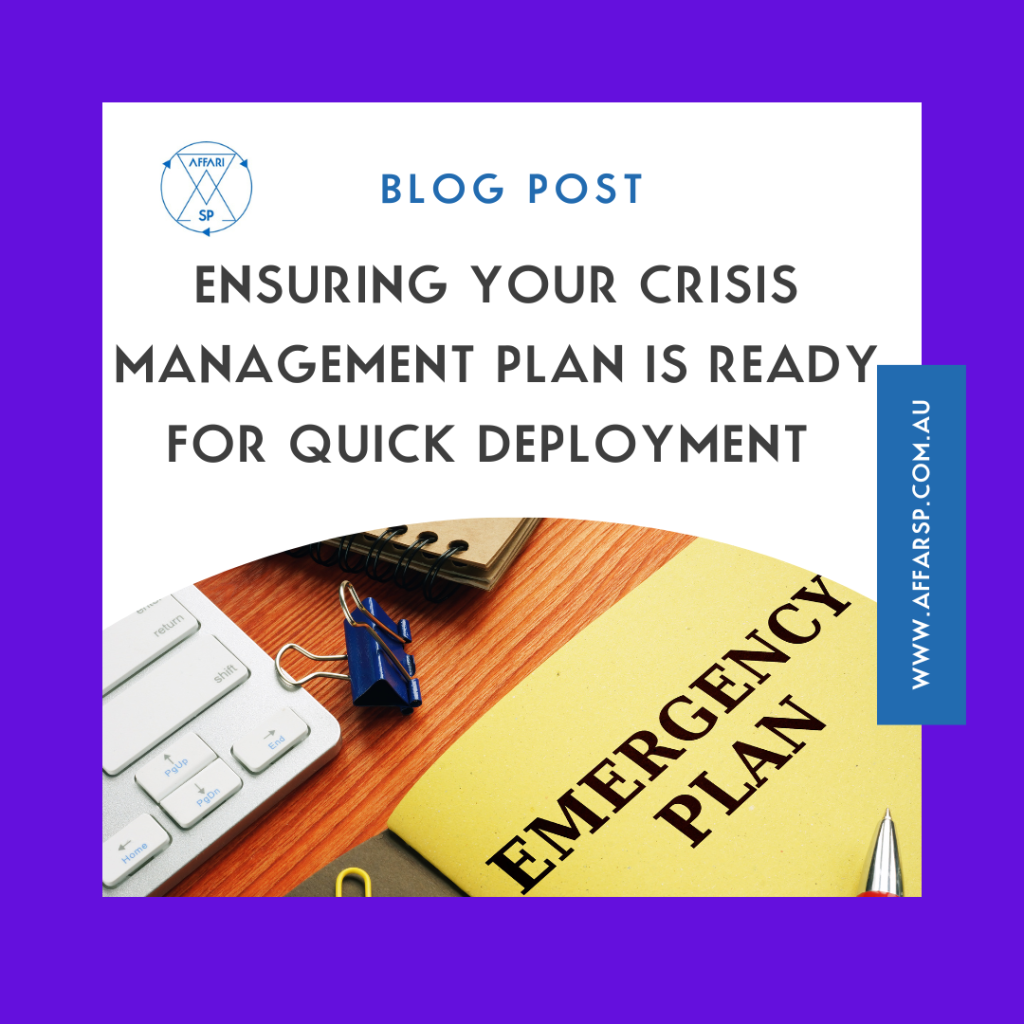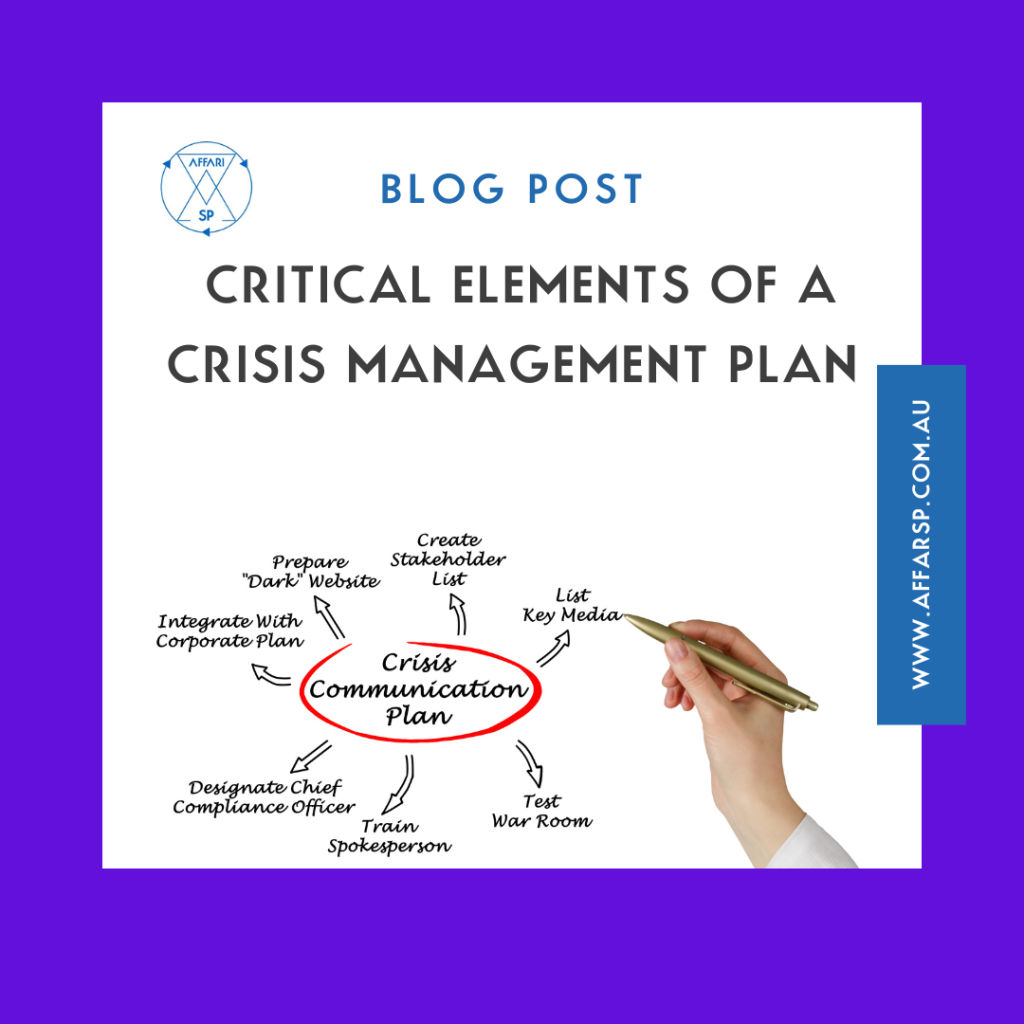Ensuring your Crisis Management Plan is ready for Quick Deployment
Article by: Sara Pantaleo
The unexpected can strike at any moment; this is why you must have a crisis management plan ready for rapid deployment at a moment’s notice. Crisis management is necessary for any business because your team won’t be prepared when the unexpected happens without it.
Confidence in your organisation’s ability to handle incidents is critical. Planning for them reduces the chance that you’ll be caught off guard, which means better crisis management solutions and, ultimately, more successful responses with fewer negative impacts associated with the incident.
Creating a crisis management plan
A fast and efficient response to an incident is what you’ll get when you create a crisis management plan. The best way to handle a crisis is by having an effective strategy in place. A proper management system can save you time and money and help avoid the negative effects of responding quickly without thoughtfulness or forethought about what should happen next! The goal of a crisis management plan is to minimise damage, calm nerves and restore operations as soon as possible with minimal interruption.

A planned response improves the outcome.
By having a crisis management plan ready to go. Your crisis response team is prepared to take action at any time. They will have detailed plans for each person who might need help during a crisis. These procedures can be carried out automatically once activated by the protocols that define them! With this planned response in place, handling any incident will go smoother, and the outcome will be more successful.

Review and update
You should also review your crisis plan every year or whenever there are changes to the risks it addresses. By reviewing and updating often, you will be prepared for whatever threats may come your way.
Ensuring your Crisis Management Plan is ready for Quick Deployment Read More »




























